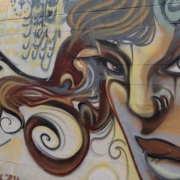Can neurofeedback reduce the effects of another symptom of trauma – gambling?
As I like to quote renowned addiction expert, Dr. Gabor Maté, “Not all traumatized people become addicted, but all addicted people, including those addicted to opioids, were traumatized in some way.” He has also stated “Addiction is only a symptom, it’s not the fundamental problem. The fundamental problem is trauma.” This message is very powerful and supports efforts to destigmatize people who struggle with addictive behaviors of all kinds, whether the impulse to soothe is temporarily satisfied by alcohol/drugs, exercise, shopping, eating, caffeine, tobacco/nicotine, internet gaming, sex, TV, social media or gambling. My adaptive behavioral addiction to chronic toxic stress as a child was eating and it did soothe me in the moment, although not for very long. Since the diagnosis of gambling addiction was added in the 5th addition of the Diagnostic and Statistical Manual of Mental Disorders (DSM-5), research has been able to focus on treatments that might be helpful to healing.
My own healing journey included both talk therapy along with yoga, to reduce the internal conflict and stress I felt and to understand why I felt it in the first place. The contemplative practices in yoga created space in my mind and body to process through talk therapy with more ease. I wasn’t aware of neurofeedback or non-invasive brain stimulation at the time, although it has been around for over 50 years. I think it was due largely to the pharmaceutical marketing push to treat mental health challenges that created our current infatuation with psychopharmacology and moved any non-pharmaceutical options into the shadows for a long time. I’m grateful neurofeedback is making a strong comeback as it does not have the many complex side effects prescription medications cause in both the body and mind!
As we begin to embrace addictions, both chemical and behavioral, as natural adaptive behaviors to chronic toxic stress from adverse childhood experiences, we can begin to expand our treatment options beyond Cognitive Behavioral Therapy (CBT) and prescription medications. Neurofeedback can expand our window of tolerance (like yoga did for me) to create space to process and release the pain and shame emanating from our past with more ease and without drugs. Although preliminary, research is beginning to show that neurofeedback can significantly reduce the cravings experienced by people struggling with a gambling addiction. If you, or someone you love may be in this space, it is my hope that you might consider neurofeedback as a tool to support the journey of healing.
If you would like to read more about the research related to gambling disorder, click on the button below:







